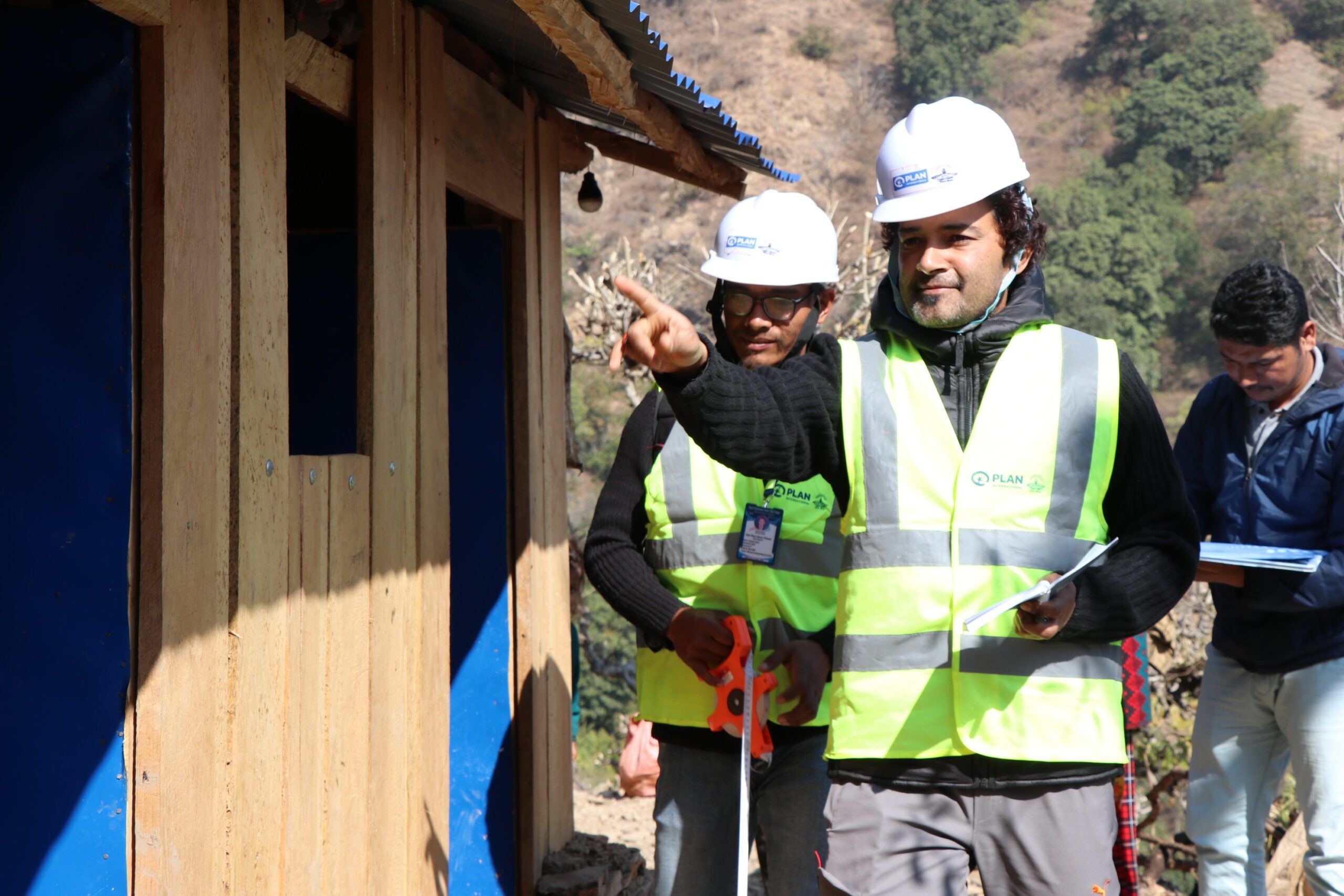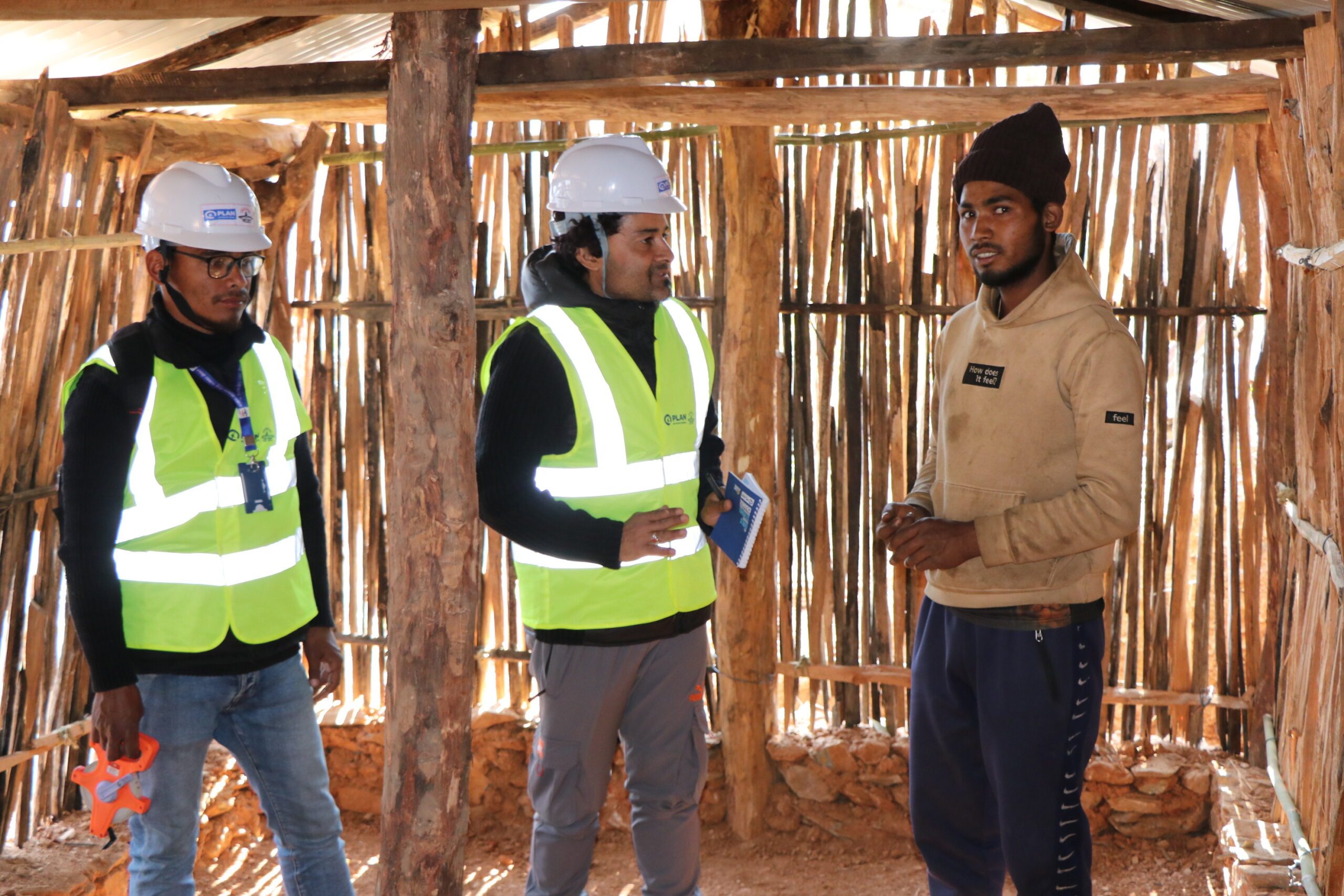Bhusan: A committed humanitarian
This World Humanitarian Day, we honour the exceptional dedication of our humanitarian workers who play a crucial role in rebuilding lives after disasters. Among these remarkable individuals is Bhusan Aryal, the construction specialist whose tireless efforts in building temporary shelters and essential facilities support and restore communities devastated by calamities.

Bhusan has over 13 years of experience working with international NGOs, including more than 6 years with Plan International Nepal. As a construction specialist, he has spent the last 7 years as a core member of the humanitarian response team, dedicated to rebuilding communities of those affected by disasters.
Inspiration to become a humanitarian worker
“Humanity always comes first,” says Bhusan. For him, being a humanitarian means understanding the universal language of humanity, which transcends differences such as gender, ethnicity, nationality, and religion. This work allows him to give his all—both physically and intellectually—to save lives and restore hope to disaster-affected populations.
To Bhusan, being a humanitarian is about upholding the basic principles of human rights. “Every person has the right to be safe, protected, heard, and respected,” he explains. His greatest satisfaction comes from helping disaster survivors, particularly the most vulnerable—women, children, the elderly, and people with disabilities—return to safety and dignity.
Memorable experience as a frontline responder
One of Bhusan’s most unforgettable experiences was during the devastating Gorkha Earthquake in 2015, which struck his home district of Gorkha, causing immense destruction and loss of life. Having lost two homes himself, Bhusan was deeply affected by the disaster. However, just months before the earthquake, he had completed the Emergency Response Training, which equipped him with the skills to act swiftly in a crisis.
As someone familiar with the area and personally affected, Bhusan was deployed to lead the rapid response in Gorkha. He witnessed the pain, fear, and anger of people who had lost everything. Despite these challenges, Bhusan quickly earned the community’s trust by being both a local and a victim himself. He took charge of rapid needs assessments and relief distribution, helping to establish complaint feedback mechanisms (CFM) to ensure transparency and accountability in the relief efforts.
Challenges and solutions
One of the biggest challenges Bhusan faced during the Gorkha Earthquake response was the sheer scale of destruction. Entire settlements were reduced to rubble, and thousands were left homeless. With limited resources, prioritising the most vulnerable—particularly disadvantaged and minority groups—was a daunting task.
To address this, Bhusan and his team initially provided blanket assistance to ensure immediate relief. As the response progressed, they engaged local leaders in targeting resources based on set criteria, empowering communities to prioritise their own needs. This approach ensured that the most vulnerable, especially children, women, and people with disabilities, received the help they needed.
Bhusan recalls, “Despite the overwhelming destruction, collaborating with local leaders allowed us to prioritise the most vulnerable. My confidence and adaptability drive me to ensure those in need get the support they deserve.”
Bhusan credits his motivation to his self-confidence and ability to handle pressure, navigate complex situations, and adapt to diverse challenges. He trusts in his skills and strategies, knowing that he is capable of taking disciplined risks and making informed decisions to help those in need.
Climate-smart approach
In his work, Bhusan emphasises the use of environmentally friendly construction methods. During the construction of temporary shelters and learning centres (TLCs) after the Gorkha Earthquake, his team used locally available materials like stone and wood that were suited to the local climate. They selected safe sites, ensured earthquake-resilient designs, and adhered to standard norms and codes, all while minimising environmental impact.
Even when local authorities allowed the cutting of trees at minimal cost after the earthquake in Jajarkot, Bhusan chose to use bamboo transported from Banke for the construction of TLCs and shelter homes, avoiding contributing to deforestation in Jajarkot. This approach replicated lessons learned from the Gorkha earthquake response. Although it was challenging to train local workers in bamboo construction, the result was not only environmentally friendly but also provided the community with valuable skills.

Kopila Malla, a member of the Deaf and Hard of Hearing Resource Class Management Committee, Rukum West, said, “After the earthquake destroyed our school building, we had to teach 15 students with physical disabilities in an open field. However, Plan International Nepal constructed a TLC for us, allowing us to resume teaching there. This brought immense joy to those 15 students. We believe this shelter is not just a school building but a safe space for children’s learning and education.”
Addressing feedback from communities
Bhusan Aryal has seen firsthand the importance of a well-operational CFM. During the recent Jajarkot earthquake response, community members reported concerns about the quality of corrugated galvanised iron (CGI) sheets provided for TLCs. Prioritising user safety, Bhusan’s team swiftly replaced all the substandard CGI sheets, ensuring the shelters met the required specifications. This experience highlighted the importance of accountability and responsiveness in humanitarian work.
Bhusan ’s journey as a humanitarian is marked by resilience, compassion, and a deep commitment to serving those in need. His work not only rebuilds physical structures but also restores dignity to communities devastated by disaster.
Categories: Emergencies

